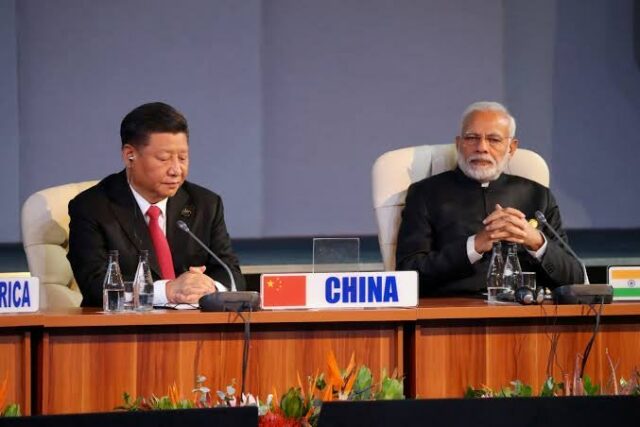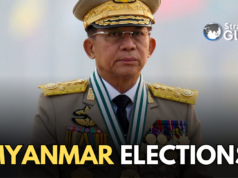Going by the two statements released by the India and China foreign ministries at the end of the 31st round of consultations in Beijing on the border, it was evident they continue to see the issue differently.
The Indian statement was factual.
“The two sides had a frank, constructive and forward-looking exchange of views on the situation along the Line of Actual Control (LAC) to narrow down differences and find early resolution of the outstanding issues.
“For this they agreed for intensified contact through diplomatic and military channels.”
Nothing there to suggest a breakthrough is imminent. Rather, both sides spelt out their respective stands and that contacts would be kept up at the diplomatic and military level. The Indian statement summed up the goal, a point made often by External Affairs Minister Jaishankar.
“It was reiterated that restoration of peace and tranquillity and respect for the LAC are the essential basis for the restoration of normalcy in bilateral relations.”
What China Said
The Chinese statement, on the other hand, sounded an optimistic note.
“The two sides agreed to work together to turn the page on the border situation at an early date.”
To the uninitiated, it could give the impression there is already consensus to “turn the page”, which is not the case.
Note the next lines in the statement.
“The two sides had in depth exchange of views on relevant issues in the border areas, further narrowed differences and expanded consensus…”
While there’s little doubt the two sides had an “in depth exchange of views,” the reference to “narrowed differences and expanded consensus”, would not be strictly true. If that was the case, there may have been no need for the 31st round of consultations.
Finally, the Chinese statement said the two sides “agreed to strengthen dialogue and consensus,” important to note that while dialogue is on there is no consensus as yet.
It ends with “accommodate each other’s legitimate concerns,” which maybe a nudge to India to accept China’s land grab, with the promise that it would help “reach a mutually acceptable resolution at an early date.”
Ground Situation Stable
While it’s good the two sides are talking, to claim progress on the ground would be naïve. China wants India to accept the fait accompli it forced on this country in 2020, India is not willing. It helps that the army has stabilised its prolonged presence along the LAC.
Army sources told Stratnewsglobal “Four years of sustained and heavy deployment in high altitude border areas in Ladakh have been challenging yet beneficial. Challenging because never before have such large number of troops been stationed in hostile weather conditions of Ladakh.”
The sources added, “Sustaining them in the face of enemy action has been a great learning experience, military top brass has said. The military standoff has also made the leadership change its focus from Pakistan-centric thinking to combatting Chinese aggression effectively. This would benefit the next generation of officers and troops in the long run.”
Political Dialogue?
Given that, is India in a hurry or under pressure to normalise with Beijing? There are some in India who say a high-level political dialogue with China is necessary at a time when many world leaders are doing so.
Presidents Biden and Xi Jinping are expected to meet at the APEC summit in November; a bevy of European leaders including Macron of France, Scholz of Germany and Georgia Meloni of Italy have beaten a path to Xi’s door, an acknowledgement of China’s economic superpower status.
There’s speculation Prime Minister Modi may attend the BRICS summit in Kazan in October, and a one on one with Xi could happen. But after three informal summits with Xi, followed by the Galwan clash, would Modi want to go down that road again?
As for the BRICS summit, with the agenda focused on “de-dollarization” and admitting countries like Iran, Delhi may have concerns how the US could see this.
Chinese Investment
Domestically, there are calls in India for opening the doors to Chinese investment in “non-strategic sectors”, to generate investment, technology and jobs (and also address the ballooning trade deficit).
But Commerce Minister Piyush Goyal dismissed it saying, “There is no rethinking at present to support Chinese investments in the country.”
But Beijing clearly sees a window of opportunity. Xu Feihong, China’s ambassador to India, in an article in The Mint, touted “China’s new reform agenda may create opportunities for India.”
Among claims of high growth and dynamic market environment, he wrote “China is committed to opening up … further relax market access, foster a world class business environment … that is law based ..”
But Indian businessmen say China’s maze of rules and regulations seek to load the dice against imports from countries like India. The claim of a world class business environment pales in the face of the Communist Party’s tightening grip over trade and industry.
Slower economic growth could trigger public anger and social unrest, which the party brass may seek to divert elsewhere. India must keep its guard up.
Thirty eight years in journalism, widely travelled, history buff with a preference for Old Monk Rum. Current interest/focus spans China, Technology and Trade. Recent reads: Steven Colls Directorate S and Alexander Frater's Chasing the Monsoon. Netflix/Prime video junkie. Loves animal videos on Facebook. Reluctant tweeter.





